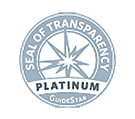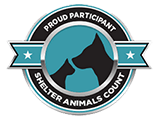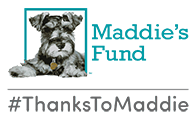General Appearance
Low to ground, long in body and short of leg, with robust muscular development; the skin is elastic and pliable without excessive wrinkling.
Appearing neither crippled, awkward, nor cramped in his capacity for movement, the Dachshund is well-balanced with bold and confident head carriage and intelligent, alert facial expression. His hunting spirit, good nose, loud tongue, and distinctive build make him well-suited for below-ground work and for beating the bush. His keen nose gives him an advantage over most other breeds for trailing.
NOTE: Since the Dachshund is a hunting dog, scars from honorable wounds shall not be considered a fault.
Size, Proportion, Substance
Bred and shown in two sizes, standard, and miniature; miniatures are not a separate classification but compete in a class division for “11 pounds and under at 12 months of age and older.” The weight of the standard size is usually between 16 and 32 pounds.
Head
Viewed from above or from the side, the head tapers uniformly to the tip of the nose. The eyes are of medium size, almond-shaped, and dark-rimmed, with an energetic, pleasant expression; not piercing; very dark in color. The bridge bones over the eyes are strongly prominent. Walleyes, except in the case of dappled dogs, are a serious fault. The ears are set near the top of the head, not too far forward, of moderate length, rounded, not narrow, pointed, or folded.
Their carriage, when animated, is with the forward edge just touching the cheek so that the ears frame the face. The skull is slightly arched, neither too broad nor too narrow, and slopes gradually with a little perceptible stop into the finely-formed, slightly arched muzzle, giving a Roman appearance. Lips are tightly stretched, well covering the lower jaw. Nostrils are well open. Jaws opening wide and hinged well back of the eyes, with strongly developed bones and teeth. Teeth-Powerful canine teeth; teeth fit closely together in a scissors bite. An even bite is a minor fault. Any other deviation is a serious fault.
Neck
Long, muscular, clean-cut, without dewlap, slightly arched in the nape, flowing gracefully into the shoulders without creating the impression of a right angle.
Trunk
The trunk is long and fully muscled. When viewed in profile, the back lies in the straightest possible line between the withers and the short, very slightly arched loin. A body that hangs loosely between the shoulders is a serious fault. Abdomen-Slightly drawn up.
Forequarters
For effective underground work, the front must be strong, deep, long, and cleanly muscled. Forequarters in detail:
- Chest – The breast-bone is strongly prominent in front so that on either side, a depression or dimple appears. When viewed from the front, the thorax appears oval and extends downward to the mid-point of the forearm. The enclosing structure of the well-sprung ribs appears full and oval to allow, by its ample capacity, complete development of heart and lungs. The keel merges gradually into the line of the abdomen and extends well beyond the front legs. Viewed in profile, the lowest point of the breast line is covered by the front leg.
- Shoulder blades – long, broad, well-laid back and firmly placed upon the fully developed thorax, closely fitted at the withers, furnished with hard yet pliable muscles. Upper Arm-Ideally the same length as the shoulder blade and at right angles to the latter, strong of bone and hard of muscle, lying close to the ribs, with elbows close to the body, yet capable of free movement.
- Forearm – Short; supplied with hard yet pliable muscles on the front and outside, with tightly stretched tendons on the inside and at the back, slightly curved inwards. The joints between the forearms and the feet (wrists) are closer together than the shoulder joints so that the front does not appear absolutely straight. The inclined shoulder blades, upper arms, and curved forearms form parentheses that enclose the ribcage, creating the correct “wraparound front.” Knuckling over is a disqualifying fault. Feet-Front paws are full, tight, compact, with well-arched toes and tough, thick pads. They may be equally inclined a trifle outward. There are five toes, four in use, close together with a pronounced arch and strong, short nails. Front dewclaws may be removed.
Hindquarters
Strong and cleanly muscled. The pelvis, the thigh, the second thigh, and the rear pastern are ideally the same length and give the appearance of a series of right angles. From the rear, the thighs are strong and powerful. The legs turn neither in nor out.
- Rear pasterns – Short and strong, perpendicular to the second thigh bone. When viewed from behind, they are upright and parallel.
- Feet-Hind Paws – Smaller than the front paws with four compactly closed and arched toes with tough, thick pads. The entire foot points straight ahead and is balanced equally on the ball and not merely on the toes. Rear dewclaws should be removed.
- Croup – long, rounded and full, sinking slightly toward the tail.
- Tail – Set in continuation of the spine, extending without kinks, twists, or pronounced curvature, and not carried too gaily.
Gait
Fluid and smooth. Forelegs reach well forward, without much lift, in unison with the driving action of hind legs. The correct shoulder assembly and well-fitted elbows allow the long, free stride in front. Viewed from the front, the legs do not move in exact parallel planes, but incline slightly inward. Hind legs drive on a line with the forelegs, with hock joints and rear pasterns (metatarsus) turning neither in nor out. The propulsion of the hind leg depends on the dog’s ability to carry the hind leg to complete extension.
Viewed in profile, the forward reach of the hind leg equals the rear extension. The thrust of correct movement is seen when the rear pads are clearly exposed during rear extension. Rear feet do not reach upward toward the abdomen and there is no appearance of walking on the rear pasterns. Feet must travel parallel to the line of motion with no tendency to swing out, cross over, or interfere with each other. Short, choppy movement, rolling or high-stepping gait, close or overly wide coming or going are incorrect. The Dachshund must have agility, freedom of movement, and endurance to do the work for which he was developed.
Temperament
The Dachshund is clever, lively, and courageous to the point of rashness, persevering in above- and below-ground work, with all the senses well-developed. Any display of shyness is a serious fault.







